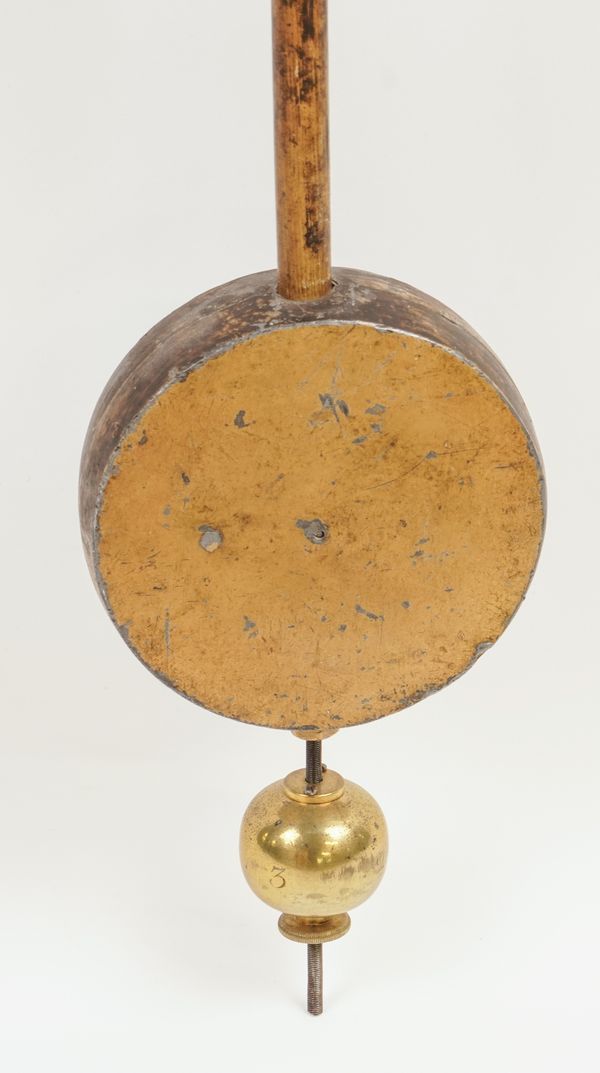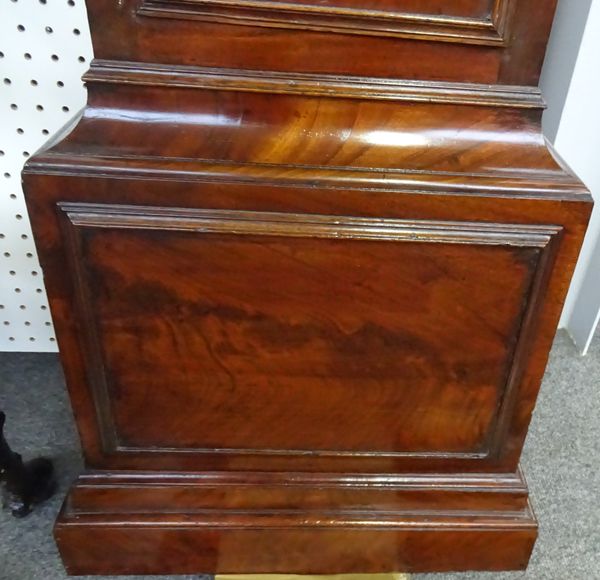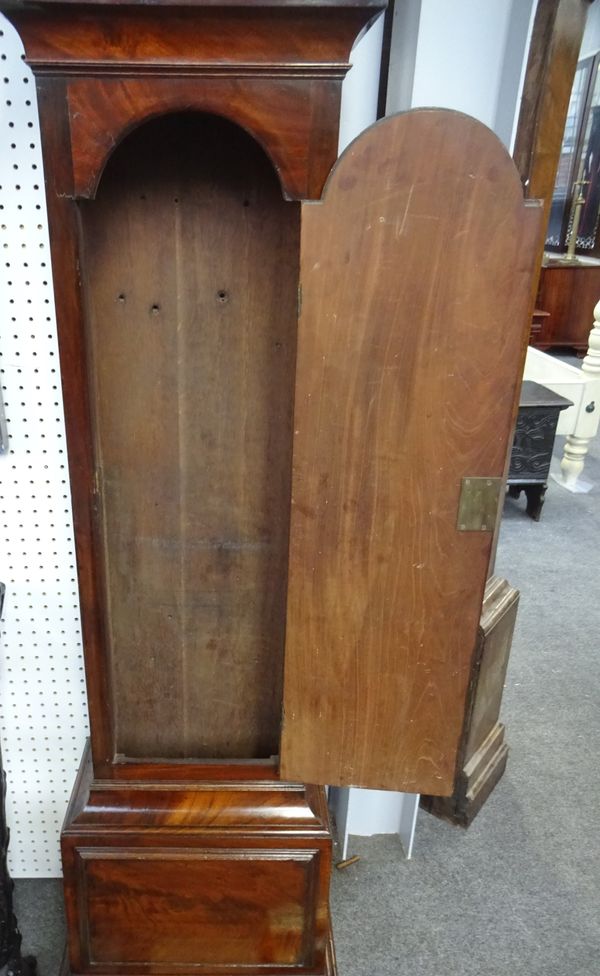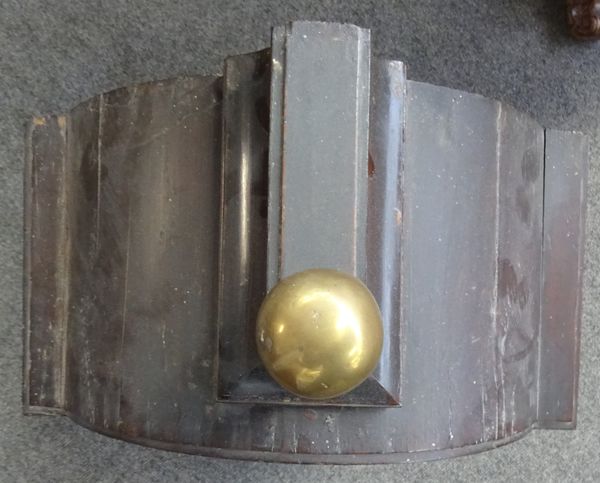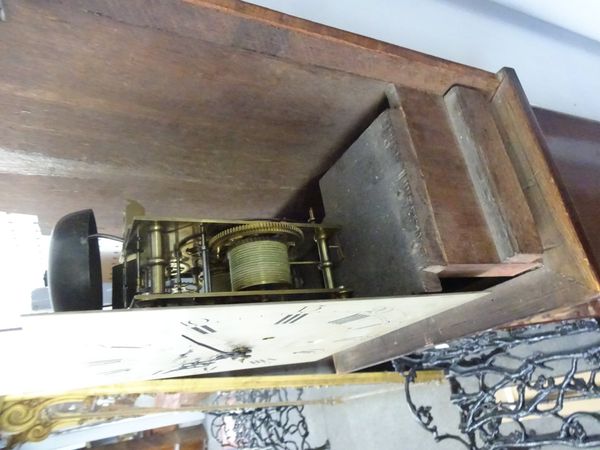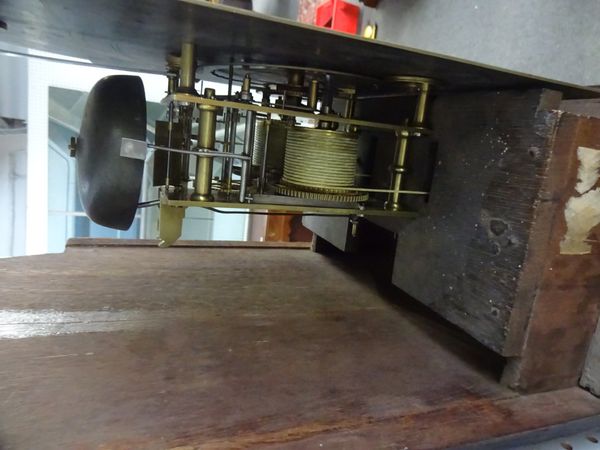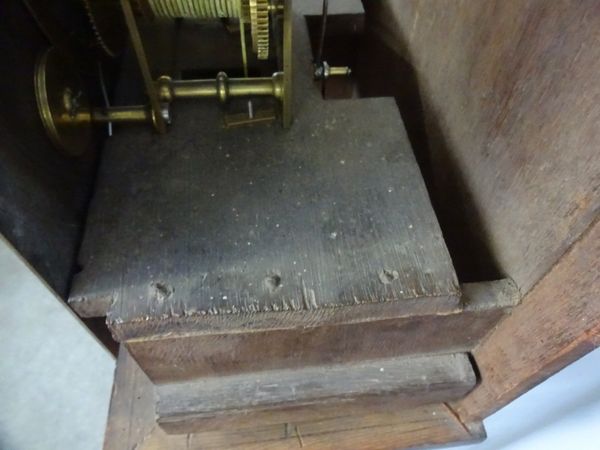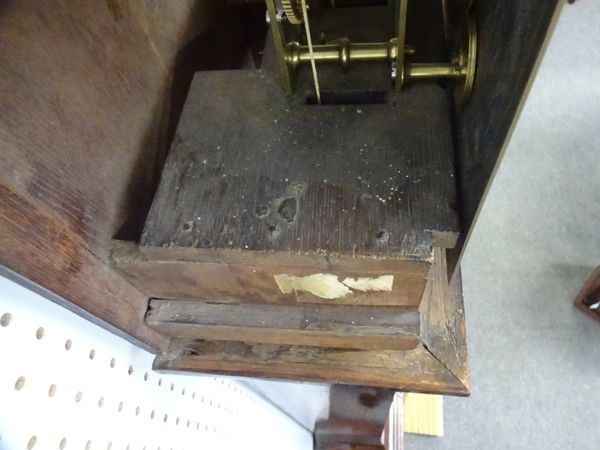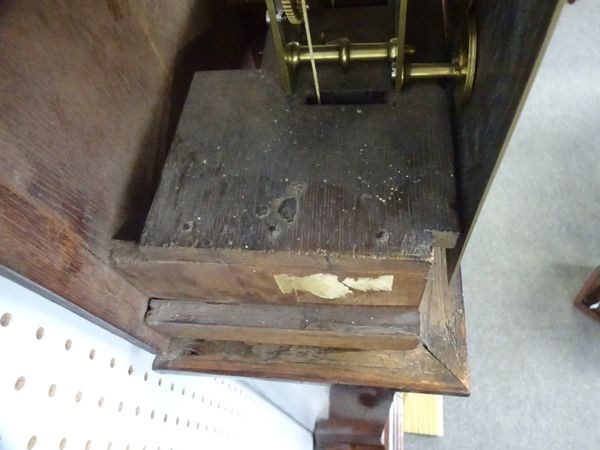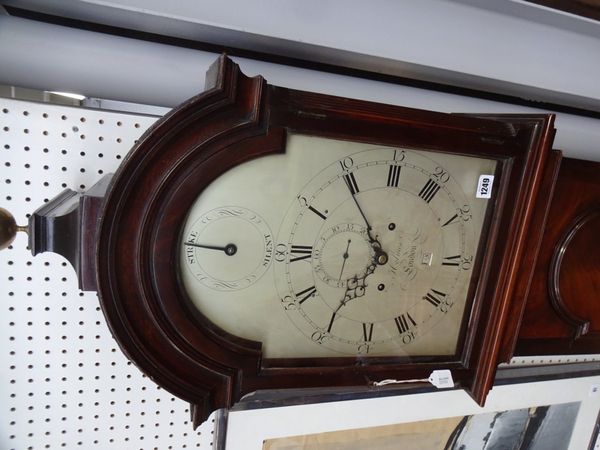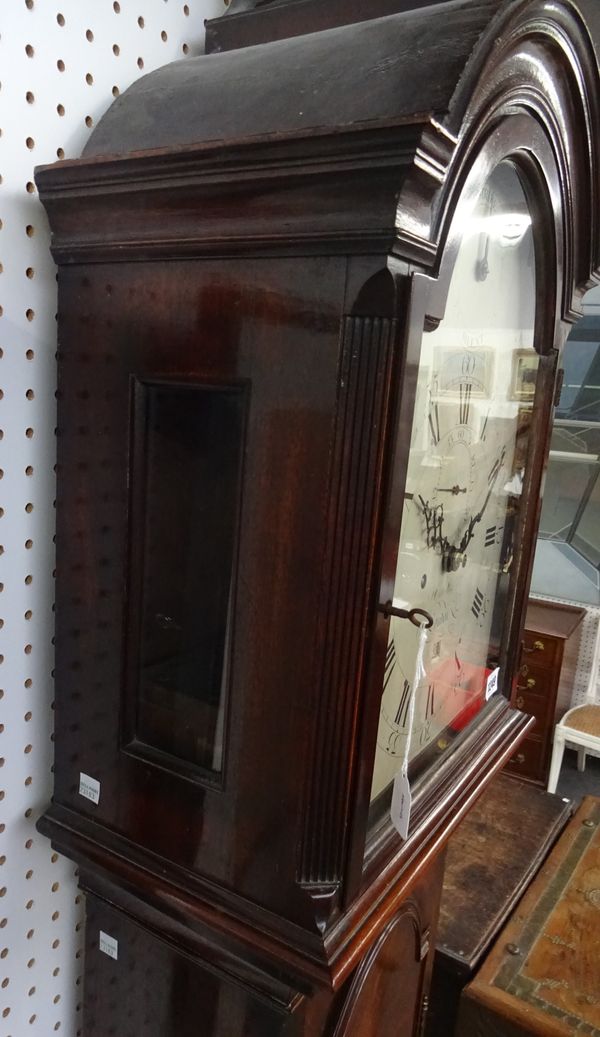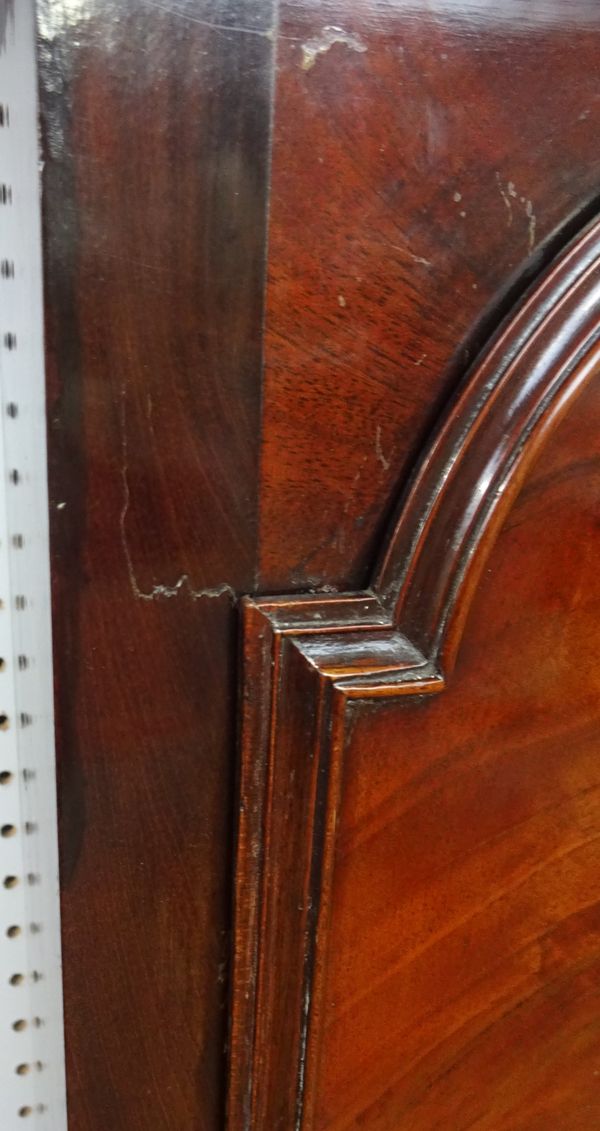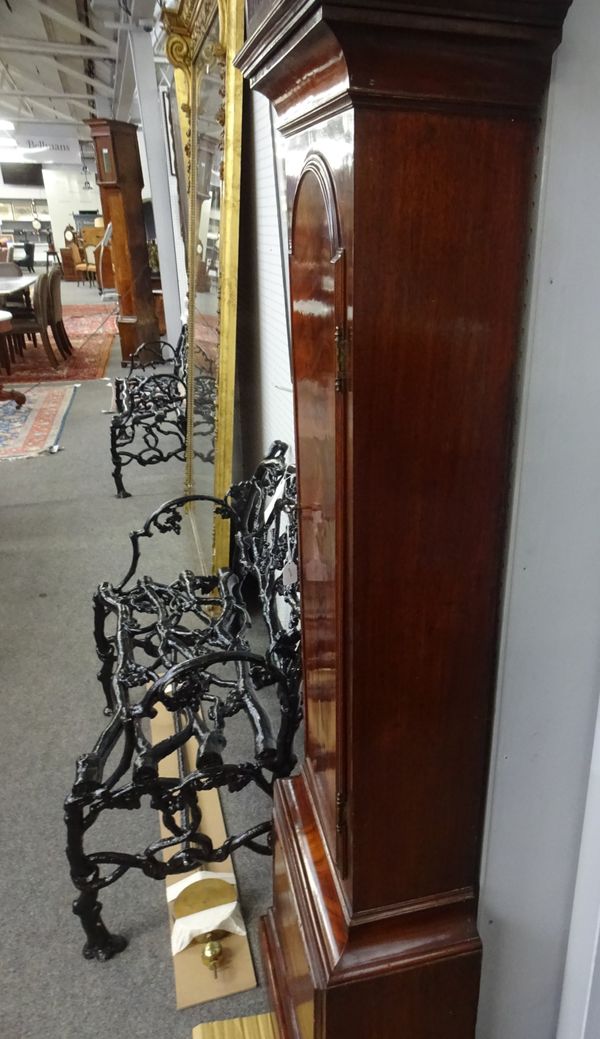A FINE GEORGE III MAHOGANY LONGCASE CLOCK
By John Holmes, London
| Estimate: | £8,000 - £12,000 |
The hood with a sphere finial above a break arch moulding, glazed panel door flanked by canted fluted angles and a glazed panel to each side, the trunk with a well-figured arched panel door, above panelled base and stepped plinth; the 12in arched silvered dial, signed to the centre Holmes, London, with Strike/Silent subsidiary to the arch, seconds subsidiary below the XII and calendar aperture above the VI, the twin train movement with five knopped pillars, maintaining power, anchor escapement and offset pivoted crutch, the wood rod 'Ludlam' pendulum suspended from a substantial bridge on the backplate, with massive gilt-painted lead disc-shaped-bob, above calibrated brass sphere for rating
226cm high
PROVENANCE: Gorringes, Lewes, 22 March 2016, lot 254.
A virtually identical clock sold Christie's, London, 20 February 2008, lot 99.
Another, with brass and enamel dial, sold Sworders, Stansted Mountfitchet, 23 March 2022, lot 598.
COMPARATIVE LITERATURE:
Tom Robinson, The Longcase Clock, Woodbridge, 1981, p.168.
Tony Mercer, Chronometer Makers of the World, London 1991, p. 165.
Thomas Reid, Treatise on Clock and Watch Making, Edinburgh, 1832, p. 404 and p. 432-453.
Eric Bruton, The Weatherfield Collection of Clocks, London, 1981, p. 224, fig 205.
Richard Garnier & Jonathan Carter, The Golden Age of English Horology, Masterpieces from the Tom Scott Collection, Winchester 2015, p. 247.
Chris Watson, Antiquarian Horological Journal, Vol. 27, No. 3, pp. 289-301 and Vol. 27, No. 6, pp. 643-653.
John Holmes (b. 1727, d. 1797) was apprenticed to Henry Hindley of York in 1743. Following the end of the apprenticeship he moved to London, lodging in Holborn with his second cousin John Smeaton, the instrument maker, horologist and civil engineer responsible for the Eddystone lighthouse. In 1754 he is recorded as working at Hard Court, Holborn. Here it is thought he carried out work for Thomas Mudge and William Dutton. It’s interesting to note that Holmes' first apprentice was Benjamin Dutton, William's nephew. This link clearly connects the similarities in their work and their choice of distinctive cases for their longcase clocks. By 1760 Holmes had moved to The Strand, just close to Somerset House, where he remained. The business continued after his death by his wife and two of his sons until closing in 1816.
A fine and innovative maker, he was well connected in London's horological world.
Holmes consulted Rev. William Ludlam, Astronomer and Professor of Mathematics at Cambridge university, who in 1769 published a work with a description of a wooden pendulum. John Holmes had a high regard for wooden pendulum rods and presented a paper on the subject to the Royal Society in 1771 (see Robinson, op. cit.). It recorded the performance of a clock by him with a wooden pendulum rod. Over the course of a year the daily rate carried from a maximum gain of 2.4 seconds to a maximum loss of 1.9 seconds. At the end of the year the rate was within half a second of what it had been at the beginning.
He was a member of the 1791 House of Commons Select Committee reporting on Thomas Mudge's marine chronometers.
Bruton (op. cit.) shows a Holmes longcase clock of closely related design in the Wethersfield collection. Holmes frequently used 'Dutton' style cases employing the finest cabinet work of the day and probably from the workshops of the Rich family of Fleet Street, and also supplied Mudge and Vulliamy.
This clock is in very good original condition, has been well cared for and is in running order. The movement was cleaned recently. There are two brass cased weights and the original Holmes wood rod pendulum. There are two keys for the door locks. The case has some marks and knocks commensurate with age. The best quality London longcase made.



